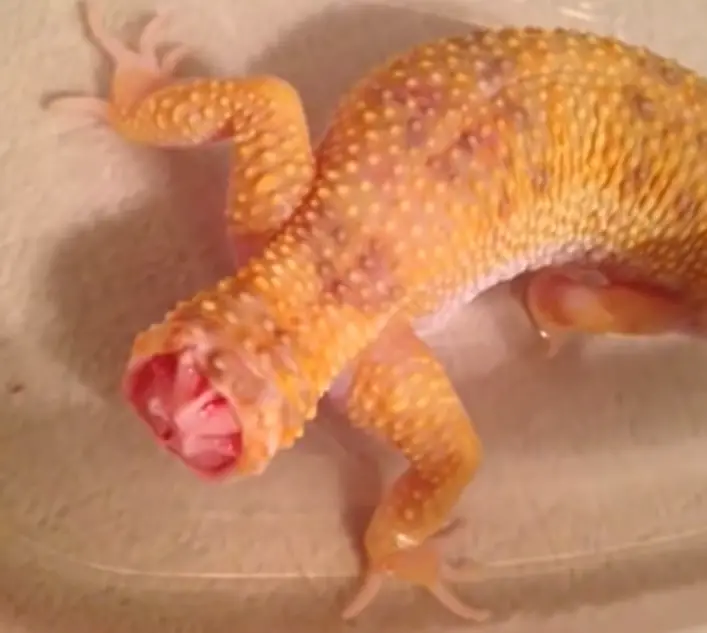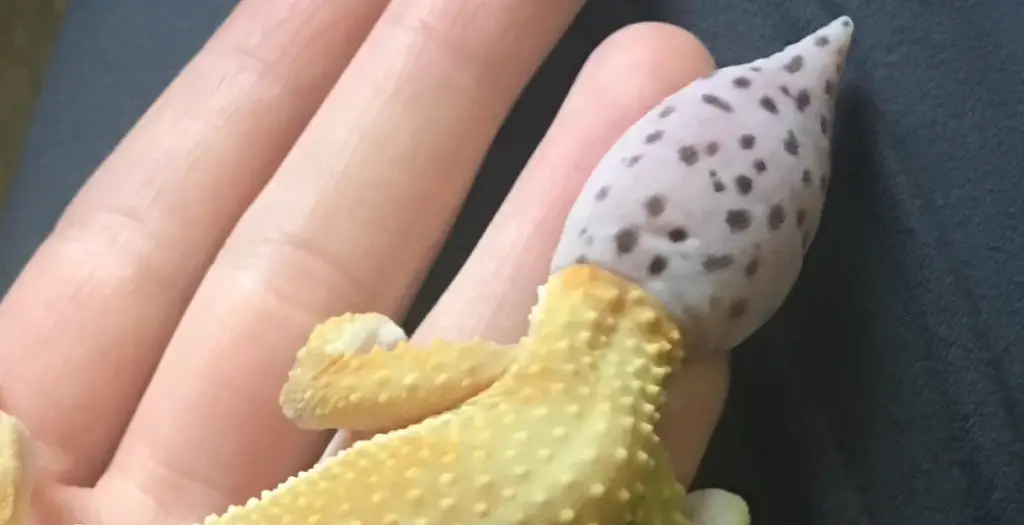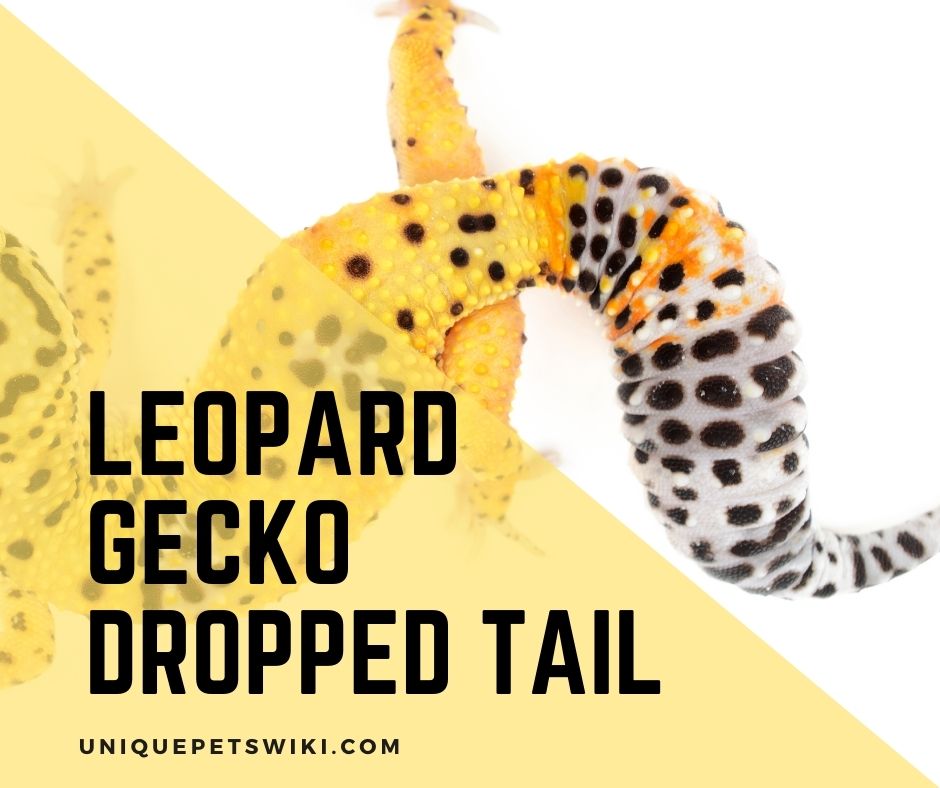Isn’t it fascinating to see how lizards’ tails will just detach from its body and regenerate and grow back within a short time? It raises the curiosity of an average keeper, especially those new to keeping leopard geckos as pets.
The ability of leopard geckos and other lizards to drop their tails and regrow it isn’t a myth. There’s a scientific explanation to it. Thus, this shouldn’t get you thinking about how possible, but how amazing.
It’s indeed normal for leopard geckos to drop their tails when they feel unsafe. It is something that happens quite often in the wild.
If you’ve ever wondered why they decided to drop their tails instead? Why is it so easy to get rid of their tails and grow back? Then you’re at the right place.
This article will explain in detail why leopard geckos dropped their tails and why it is so easy to regrow it. You’ll also learn how best to handle your pet gecko so that it’ll not drop its tail. And also what to do if your pet leopard gecko drops its tail.
When you understand the reason and force behind their tail dropping and regrowth, you’ll worry less about your pet’s tail dropping. Besides, a better understanding of why they drop their tails will guide you to avoid similar occurrences in captivity.
This article has been reviewed by Dr. Gospel. Read more about our knowledge control process here.
Contents
- Leopard Gecko Dropped Tail
- Why Do Leopard Geckos Drop Their Tails?
- Will Their Tails Grow Back?
- How Long Will It Take For Their Tails To Grow Back?
- Does It Hurt A Gecko To Lose Its Tail?
- What To Do When Your Lizard Loses Its Tail
- Can Leopard Geckos Drop Their Tails Twice?
- Will My Leopard Gecko Drop Its Tail When I Handle It?
- Wrapping Up
Leopard Gecko Dropped Tail

(Image Source: Okie Pokey Hogs)
Leopard geckos are known for dropping their tails whenever they are threatened by predators. After dropping their tails, they’re able to grow it back in a few months. Their body system has the capability of generating new tissues that’ll aid the regeneration process.
In the wild, it’s a funny scene to watch a leopard gecko drop its tail. They usually do this in defense of themselves. When predators threaten them, they would drop their tails so that they can escape.
Once the tail is detached, it’ll continue to squirm and twitch to distract the predator long enough for the lizard to escape.
Besides, leopard geckos have several stem cells and bones running down their backs. These bones are called vertebrae. Along with their tails, they also have a series of weak spots known as fracture planes.
It is around these spots that their tails will detach. After the tail is detached, the stem cells will produce proteins that will grow another tail.
In a nutshell, the presence of those fracture planes around their tails tells us why it is easy for leopard geckos to drop their tails when they’re insecure without feeling pain.
Why Do Leopard Geckos Drop Their Tails?
There should be a reason why leopard geckos drop their tails. Without a logical explanation, it would be pointless having them as pets when they’ll only end up losing their tails.
Fortunately, leopard geckos don’t just drop their tails because they want to. A few factors account for why they drop their tails. Let’s find out.
As A Defense Mechanism
As stated earlier, the main reason leopard geckos drop their tails is to defend themselves from predators. When predators grab their tails in the wild, they’ll usually drop the tail with the predator as a decoy to escape.
This technique will enable them to escape from dangerous predators unharmed safely. Other than that, their tails will remain intact.
In captivity, they will also drop their tails if they perceive any danger within or outside their enclosure. These may include:
- Handling (grabbing, pulling, or pinching) your gecko by the tail.
- Getting stuck or injured by any of the cage accessories.
- Illness/low immunity
- Abscess or swelling around the tail
- Fighting as a result of housing more than one gecko in a terrarium.
- The younger geckos being attacked by the older ones, and many more.
To Stop The Spread Of Poison
Another reason leopard geckos drop their tails is to stop or prevent the spread of poison from getting to other parts of their body. This is called autotomy.
If they happen to be attacked by a venomous animal such as snakes, to avoid the poison from getting to their entire body, they would drop their tails. This goes a long way to telling us how intelligent leopard geckos are.
Their ability to lose their tails and regrow it makes researchers in the University of Guelph conclude that leopard geckos make ideal models for studying wound healing and tissue re-development in humans.
Will Their Tails Grow Back?
Yes, leopard geckos will grow back their tails after it has been dropped. The process of regenerating tissues and re-growing a new tail is entirely unique. Leopard geckos have several bones that make up their spinal column.
Besides, their spinal cord extends to the tail. Over the years, the cell responsible for their ability to regrow a tail after it has been dropped was unknown. Nonetheless, in recent years, researchers have discovered a special type of stem cell in the spinal cord that aids the regeneration process.
This cell is called the ‘radial glia’. This cell is believed to be at rest when the lizard’s tail is still intact. But once the tail is dropped, the cell sprang into action by generating different proteins in response to the injury.
Instead of the injury to heal and close up forming scars as with mammals, the proteins produced by the radial glial cell creates a new spinal cord. This process, in simple terms, forms the new tail.
How Long Will It Take For Their Tails To Grow Back?

The injury sustained from dropping the tail in leopard geckos heals faster than you can imagine. Scientists have posited that they grow another tail faster than any other kind of lizard.
Since the cell responsible for the regrowth sprang into action almost immediately. Regeneration depends on certain factors including the immune system of the gecko. In some geckos, the tail should heal and close up within 3 – 4 weeks and should be fully regenerated within 8 weeks.
Does It Hurt A Gecko To Lose Its Tail?
Mammals such as humans or dogs can easily show pain, but it’s difficult to tell when a reptile is in pain. Scientifically, there isn’t any way either to measure pain in reptiles.
Although there isn’t any study to prove that it hurts leopard geckos to drop their tails, the sight of it is enough to tell you that they go through some pain when dropping their tails.
The severed area normally looks fresh, red, and disgusting to look at. The detached tail usually continues to wiggle and move for about half an hour or up to an hour. This will make you believe that it hurts your leopard geckos to drop their tails.
What To Do When Your Lizard Loses Its Tail
Lizards are known to reserve fats and other nutrients in their tails from where they get energy during hibernation and breeding seasons. Hence, leopard geckos are no different. They store fats and nutrients in their tails.
Thus, when they drop their tails to defend themselves, they lose some amount of nutrients and fats that can sustain them. When this happens, they are vulnerable to getting sick from loss of weight.
As a good keeper, you should know what to do to help your leopard gecko regrow its tail. Here are a few tips:
- The first thing you’ll have to do is give your pet gecko some time to settle in. whatever was the reason for the tail drop might have caused it some stress.
Handling your gecko almost immediately isn’t a good idea. It’ll stress your lizard out the most.
- Another thing you should do is to find out what was the cause of the tail drop. If it was from the cage set up or any of the accessories, ensure that you take your gecko out, clean it very well, set up the cage to avoid future injury before putting your lizard back in its cage.
If possible, you can change your substrates to what you know will not get stuck in the wound.
- While cleaning the wounded area to remove any chunk of substrates, you can use a wet clean rag and gently rub the affected area till the chunk is out.
After this, apply some antiseptic to help with bacteria and infection from attacking your lizard. For the antiseptic, you can use triple antibiotic ointment or Betadine antiseptic.
- Ensure that your gecko is housed alone. Housing it with other geckos will exacerbate the injury. They’ll likely bully the injured gecko till the injury becomes worse.
- Ensure that adequate food and water is provided. Since they’ve lost a good amount of their reserved nutrients, you’ll be expected not to miss any meal. They need more fatty foods to get back to full health and regrow their tails.
- Since leopard geckos are cold-blooded, ensure that their cage has optimal temperatures to digest their food properly.
Aside from digesting their food properly, they need to stay in a warm environment until they’re completely healed.
Can Leopard Geckos Drop Their Tails Twice?
Of course, yes. There’s no limit to how many times leopard geckos can drop their tails as long as they’re still alive.
As noted earlier, leopard geckos have several numbers of stem cells and proteins that support the regeneration of a new tail. These cells are in abundance in leopard geckos and are put to work each time the lizard loses its tail.
The only time a leopard gecko will not be able to regrow its tail is when it gets too old. As leopard geckos grow older, the speed at which the cells produce proteins for tail regrowth reduces. Gradually, it keeps on slowing down till the lizard is unable to raise another tail.
Will My Leopard Gecko Drop Its Tail When I Handle It?
How you handle your leopard gecko will determine if it’ll drop its tail. Whether it’ll drop its tail also depends on how you make the lizard feel when handling.
In the wild, leopard geckos wouldn’t drop their tails if not threatened by predators. They do that to defend themselves just like ball pythons will curl up into a tight ball in self-defense.
Hence, if your leopard gecko feels threatened or insecure when you’re handling it, it’ll drop its tail.
A study by Prof. Matthew Vickaryous in 2017 proves that wrong handling in captivity will make leopard geckos drop their tail. Vickaryous observed that on pinching the gecko’s tail during his research, lizards drop their tail and try to escape.
He added that almost immediately, the region where the tail detaches begins to heal itself. This leads to new tissues’ formation—eventually, a new spinal cord, which is the new tail.
Since the fear of predators is the main reason leopard geckos drop their tails in the wild, the rate at which this happens in captivity should be minimal because there are no predators in captivity.
However, this happens quite often in captivity than it is supposed to. This is as a result of wrong handling.
So how best should you handle your pet leopard gecko to avoid it dropping its tail?
- When handling your pet leopard gecko, avoid holding it by the tail. If you hold it by the tail, the lizard will feel insecure and may drop its tail.
- Avoid holding your pet gecko too tight. Squeezing or unintentionally pinching your pet leopard gecko will only signal him that he’s in danger.
Wrapping Up
Every wild animal has its unique way of escaping from predators. For leopard geckos, dropping their tails to distract predators long enough for them to make an escape is their technique.
Leopard geckos will only drop their tails under extreme stress—a condition we can describe as a life or death situation. Thus, tail dropping for leopard geckos is a defense mechanism.
Since their spinal cord houses, several stem cells and these cells can produce proteins known to support new tails’ growth, dropping and re-growing their tails becomes easy for them.

hello! (Apologies, it will not print Lower case letterS). Today lucy the lizard (Leopard gecko) escaped her Terrarium while her pet boy was not home. A cat grabbed her. Yes, she dropped Her tail and we all were freakinG out. Your article is very tHorough and very helpful. Now miss lucy needs to read it that she is not supposed to die from this. (I’m gramma). Her peT human is home, now. Thank you so much. I will direct the boy (mAson rillstone) to your site. This is his first lizard—he is 12.
My actual Email is in all smalls.
Merry chrisTmas! Your granddaughter is very beautiful!
Thank you for your words to Katie, she will love it. All the best!